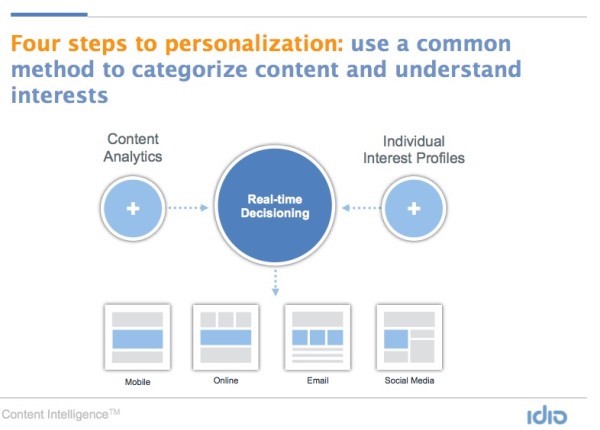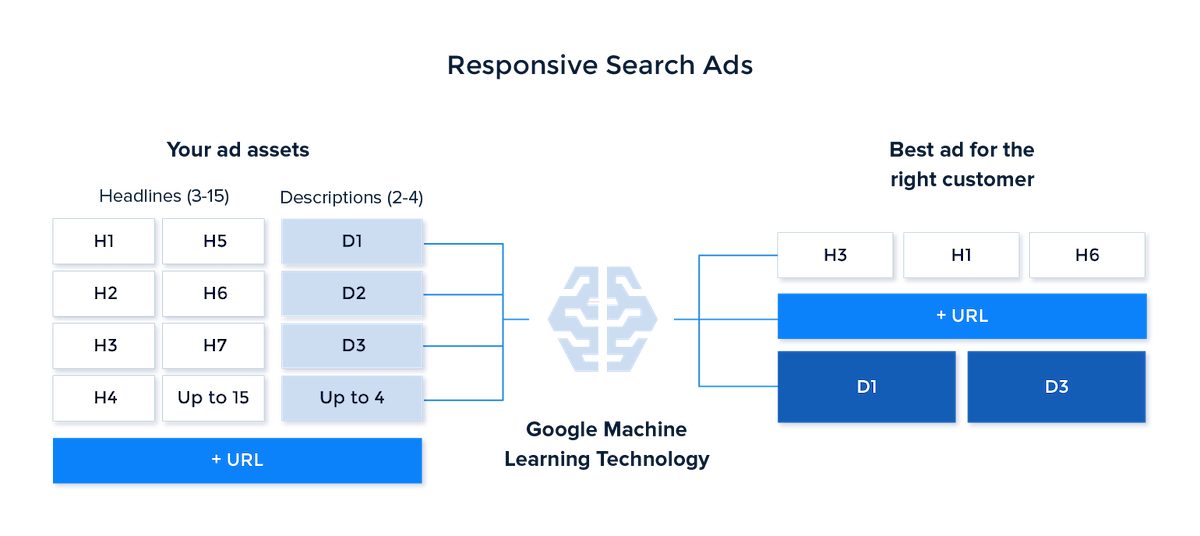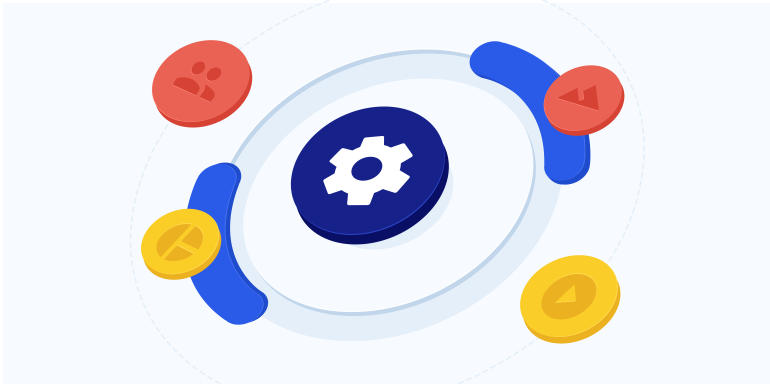Automated processes were created during the industrial revolution to limit human effort in repetitive tasks. As time went by though, automation and artificial intelligence made their way into other areas where human effort was required — digital advertising and marketing included.
Today, marketing automation is constantly growing, expected to reach $5.5 billion by the end of 2019. Included under the marketing automation umbrella is content automation.
Today’s post will define content automation, explain areas it is possible within content strategy, and showcase a list of automation tools trusted by digital marketers around the world.
What is content automation?
Content automation is a branch of content marketing automation and includes the systems and processes that help remove the need for human intervention in the content lifecycle. The goal is to program, or automate any content process that is repetitive, time-consuming, or costly.
At its core, content automation is an extension of semantic analysis and natural language processing. These technologies make it possible to read and organize each individual piece of content in an automated way that’s standardized (maintains the same standard) and reusable (so publishers can choose the best piece of content for other purposes).
This is how content is categorized for automation based on user interests:

Content automation works by identifying repetitive content-related tasks and using tools or applications to perform them. Let’s now have a look at the areas where you can use content automation.
Automating advertising content
Advertising platforms such as Google Ads and Facebook Ads have content automation capabilities that help advertisers get the best results from their ad content without requiring manual effort.
Google Ads content automation
Google Ads has the following content automation capabilities:
- Responsive Search Ads: you can create up to 15 headlines and 4 descriptions, the platform then creates combinations of the headlines and descriptions and tests for the best results:

- Responsive Display Ads: you can utilize assets (images, headlines, logos, and descriptions) to automatically generate ads to show on the Google Display Network.
- Dynamic Search Ads: the ad type combines Google’s web-crawling technology and knowledge of a website’s inventory to automatically generate an ad and destination URL based on the query and the web page content.
- Dynamic remarketing: your ads are targeted to users who have previously visited your website or used the mobile app. It also shows ads that contain specific products and services people viewed on the website.
- Ad Suggestions: Google Ads creates suggestions when users don’t have multiple ads in each ad group. The suggestions can be found under “Ads & Extensions” on the Recommendations page of your Google Ads account:

Facebook Ads content automation
Facebook’s Automated Ads encourages advertisers to tell Facebook what’s most important for their business so it can create a custom advertising plan with step-by-step recommendations for the right ads.
Automated Ads continually learns what performs best and offers suggestions for improvement.
The feature helps you create and manage ads with:
- Multiple versions of your ad: Facebook analyzes and suggests CTA buttons, text, and other creative details based on information from your Page and automatically shows the best-performing version.
- Tailored Audience Suggestions: Get tailored audience suggestions or an automatic audience option customized to your business, based on information from your Page — people near your business location, people who have related interests, etc.
- Prompt Notifications: Receive notifications about ads to understand how they’re performing and ways to optimize them.
Automation helps generate better ROI for your ad campaigns without requiring a lot of effort and time from you. Facebook Ads automation uses machine learning to help identify the ad with the potential to drive maximum engagement and advertising conversions, taking the burden away from advertisers.
Automating content creation
Whether you’re striving to increase brand awareness or user engagement, every piece of content generated by your brand needs to be fresh, relevant, and useful to your audience. Perhaps, that’s the reason why it is difficult to imagine how a machine can handle tone of voice and target audience’s expectations with content creation.
Heliograf, The Washington Post’s homegrown AI technology, proves that not only can the process of content creation become automated, it can also successfully engage real prospects.
In 2016, the technology created around 300 short reports and alerts on the Rio Olympics. Since then, Heliograf has been used to cover congressional news and high school football games. These examples show how the technology was successful in transferring information to the reader naturally. In fact, readers weren’t even aware that a bot had written the reports.
The Washington Post is not the only publisher to use automation for content creation. Forbes’ content management system Bertie assisted in providing reporters with first drafts and templates for news stories. Similarly, Bloomberg’s Cyborg wrote thousands of articles that translated financial reports into news stories just as a business reporter would do.
Although automation in content creation has worked previously for specific content, the process isn’t currently possible for content that requires human connection, empathy, and fulfilment of marketing goals, such as, user engagement and lead generation.
Currently, the area of content creation successfully being automated is content presentation, i.e. automating the process of choosing the optimal content format with templates. Marketers can reuse authored content, charts, tables, images, data, video and more. They can also tag content (manually and automatically) to maximize discoverability and enable automation down the funnel.
Automating content sharing
It takes a considerable amount of time to publish all your content manually, share it on social media, and set up social media ads for it. Automating content sharing helps you bypass these tedious tasks. Automation in this area allows marketers to establish a social media posting schedule, or have one set up for them based on their target audience, and add new content to their publishing queue.
Content automation helps you reinvent the content cycle, reduce costs, drive consistency, maintain steady workflow, and increase positive customer experiences.
With the uses of content automation covered, let’s review a few platforms offering automation capabilities.
Which platforms exist for content automation?
Here’s a list of automation tools you can use for a robust content automation strategy.
1. Quark

Quark automates the content lifecycle from creation and management to publishing and delivery. The platform offers customers the “smart content” feature, which supports structured authoring within a familiar word processor-like environment using a Web browser or Microsoft Word. Users can create and reuse authored content, charts, tables, images, data, video and more.
2. Divvy HQ

Divvy HQ is a content planning and workflow automation platform that helps customers manage their content schedules, initiatives, and campaigns across their organization.
The platform allows content managers and producers to collaboratively plan and produce content assets in real-time, anywhere, on any device. It also gives marketers access to their marketing data that show content performance.
3. PathFactory

PathFactory’s content Insight and Activation Engine leverages AI, fueled by the complete consumption history of its customers’ buyers as well as the metadata on what their content is really about.
Similar to Netflix and Amazon, the platform’s Engine uses this data to automatically curate micro-personalized journeys that are unique to each buyer. This ultimately improves conversions, reduces cycle times, and optimizes marketing spend.
4. Uberflip

Uberflip accelerates the buyer journey with personalized content experiences by automating and scaling your content management with intuitive smart filters and tags. The smart filters automatically build relevant streams of content intelligently personalized to your customer’s needs.
The four platforms featured above aren’t the only automation platforms available. You should evaluate each platform based on your team’s needs and decide which software to purchase.
Content automation streamlines your content marketing strategy
Content automation adds discipline and predictability to your content marketing. Whether it’s producing advertising content, writing articles, or sharing content on social media, content automation empowers marketers do more with less.
When done right, content automation has the power to create relevant content and target it to the right audiences with segmented messages — ultimately helping you engage and convert prospects to increase ROI.
Discover how you can automate personalized post-ad-click experiences and increase your ROI with the Instapage Advertising Conversion Cloud™. Get a demo today.

See the Instapage Enterprise Plan in Action.
Demo includes AdMap™, Personalization, AMP,
Global Blocks, heatmaps & more.
